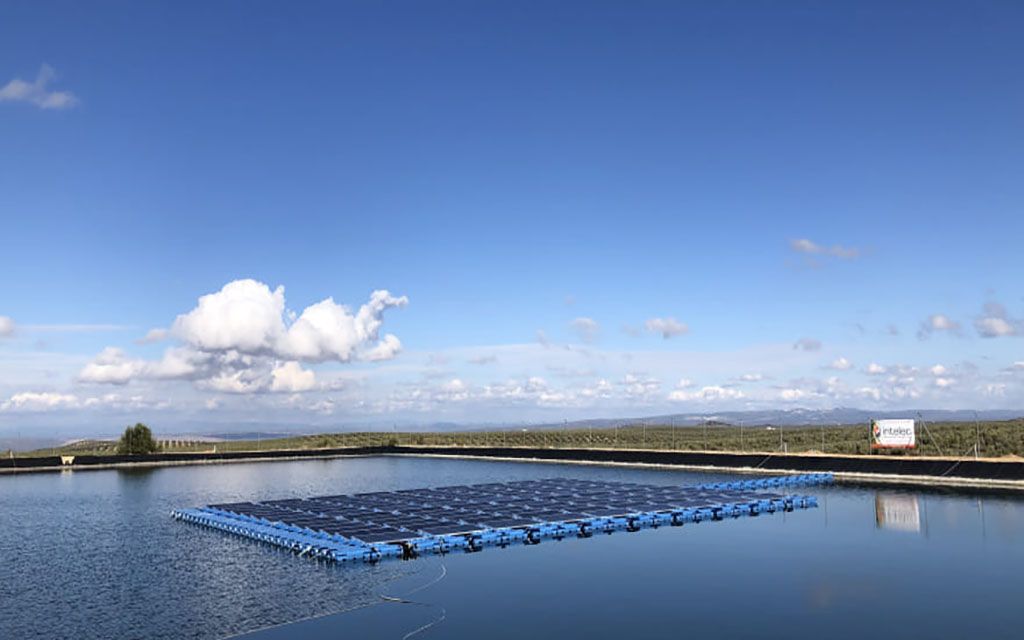Building a Floating Photovoltaic Power Station
How to build floating solars? Floating solar farms are a highly innovative and emerging technology in the field of renewable energy. These solar farms consist of photovoltaic panels that are mounted on floating platforms on water bodies such as reservoirs, lakes, and oceans. Technicians have designed them to float on the surface of the water and generate electricity by converting solar energy into electricity. In this article, we will describe the main steps involved in building a floating photovoltaic power plant.
1. Site Selection (How to build floating solars?)
The first step in setting up a floating solar farm is to identify a suitable site. The site should have a large water body with a stable water level and sufficient solar exposure. The site should also have access to the grid infrastructure for transmitting electricity to the consumers.
For site selection we have to pay particular attention to several factors, including
1. Water Depth: The water depth should be greater than 4-5 meters to ensure the stability of the floating system and to avoid any damage from waves and wind.
2. Water Quality: The water should be clean and free from pollutants to ensure the durability of the floating system and to prevent damage to the photovoltaic modules.
3. Sunlight Availability: The site should receive plenty of sunlight to maximize the electricity output of the photovoltaic modules.
4. Legal Permits: The site should have the necessary permits from the authorities.
2. Design and Planning (How to build floating solars?)
Once the technicians have identified the site, the next step is to design the floating platform and select the appropriate photovoltaic panels. The design of the platform must be sturdy enough to withstand the harsh water conditions and extreme weather events. The technician must also design the layout of the solar panels to maximise exposure to sunlight.
For the design of the floating system, technicians can consider the following factors:
1. Material Selection: The material used for the floating system should be lightweight, durable, and corrosion-resistant.
2. buoyancy: The floating system should have enough buoyancy to support the weight of the photovoltaic modules and withstand waves and wind.
3. mooring system: The mooring system should be designed to prevent the floating system from drifting away from its position due to wind and currents.
4. anchoring: Anchoring plays a vital role in keeping the floating system in its position. The anchoring system should be designed to resist the force of wind and waves.
3. Manufacturing (How to build floating solars?)
The manufacturing of the floating platform and the photovoltaic panels is the next step. The floating platform is generally made of high-density polyethylene (HDPE) or another lightweight material that can float on water. The solar panels are made of silicon or thin-film technology.
4. Transport and Installation
Technicians then transport the floating platform and photovoltaic panels to the site and install them on the water body. The installation process involves anchoring the platform to the bottom of the water body and connecting the electrical cables from the solar panels to the inverter and transformer.
Please see the following steps for the installation process:
1. Mounting the modules: The technicians should securely mount the photovoltaic modules onto the floating system according to the manufacturer’s specifications.
2. Electrical Wiring: The technician should carry out the electrical wiring and connect all the photovoltaic modules to the inverter.
3. Inverter Installation: The inverter is an essential component of the photovoltaic system, which converts the DC power from the modules into AC power. The technicians should install the inverter on the floating system near the modules.
5. Monitoring and Maintenance
Once the floating solar farm is operational, it requires regular monitoring and maintenance. Technicians must monitor the performance of the solar panels to ensure that they are functioning efficiently. The platform also needs to be regularly inspected for any damage caused by waves, storms, or other factors.
For maintenance and monitoring, please see the following tasks:
1. Cleaning the Modules: Technicians need to clean photovoltaic modules regularly to prevent shading,which can reduce the energy output of the system.
2. Checking the connections: Technicians should regularly check the electrical connections between the photovoltaic modules and the inverter to ensure that they are secure and undamaged.
3. Monitoring the energy output: Technicians should regularly monitor the energy output of the photovoltaic system to identify any defects or abnormalities.
Conclusion
In conclusion, building a floating photovoltaic power plant involves several stages, including site selection, design and planning, manufacturing, transport and installation, and monitoring and maintenance. These floating solar farms are a promising alternative to traditional solar farms and have several benefits, including conserving land resources, reducing water evaporation, and reducing carbon emissions. With the right expertise and resources, floating solar farms can contribute significantly to meeting the growing energy demand while also protecting the environment.
